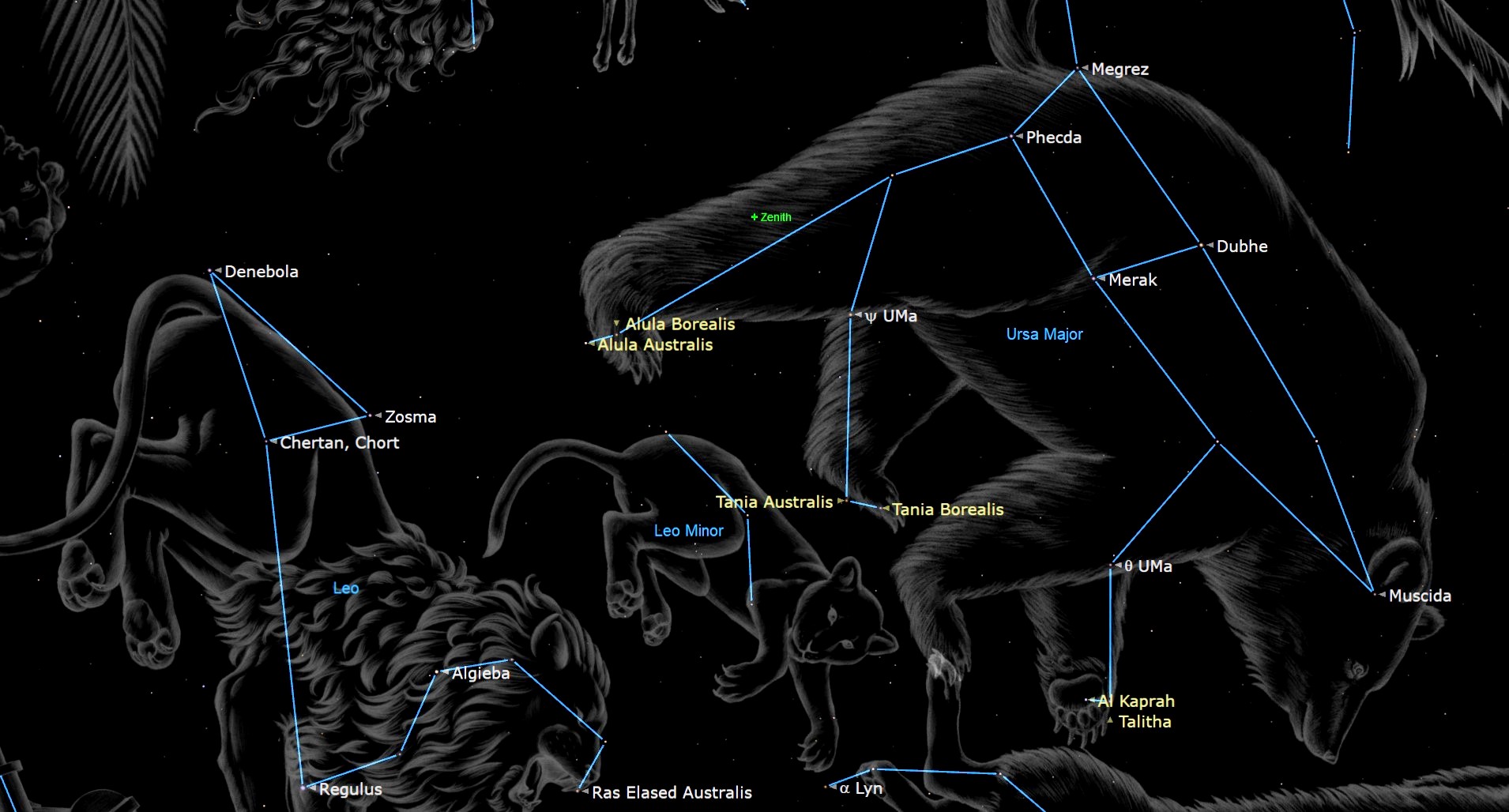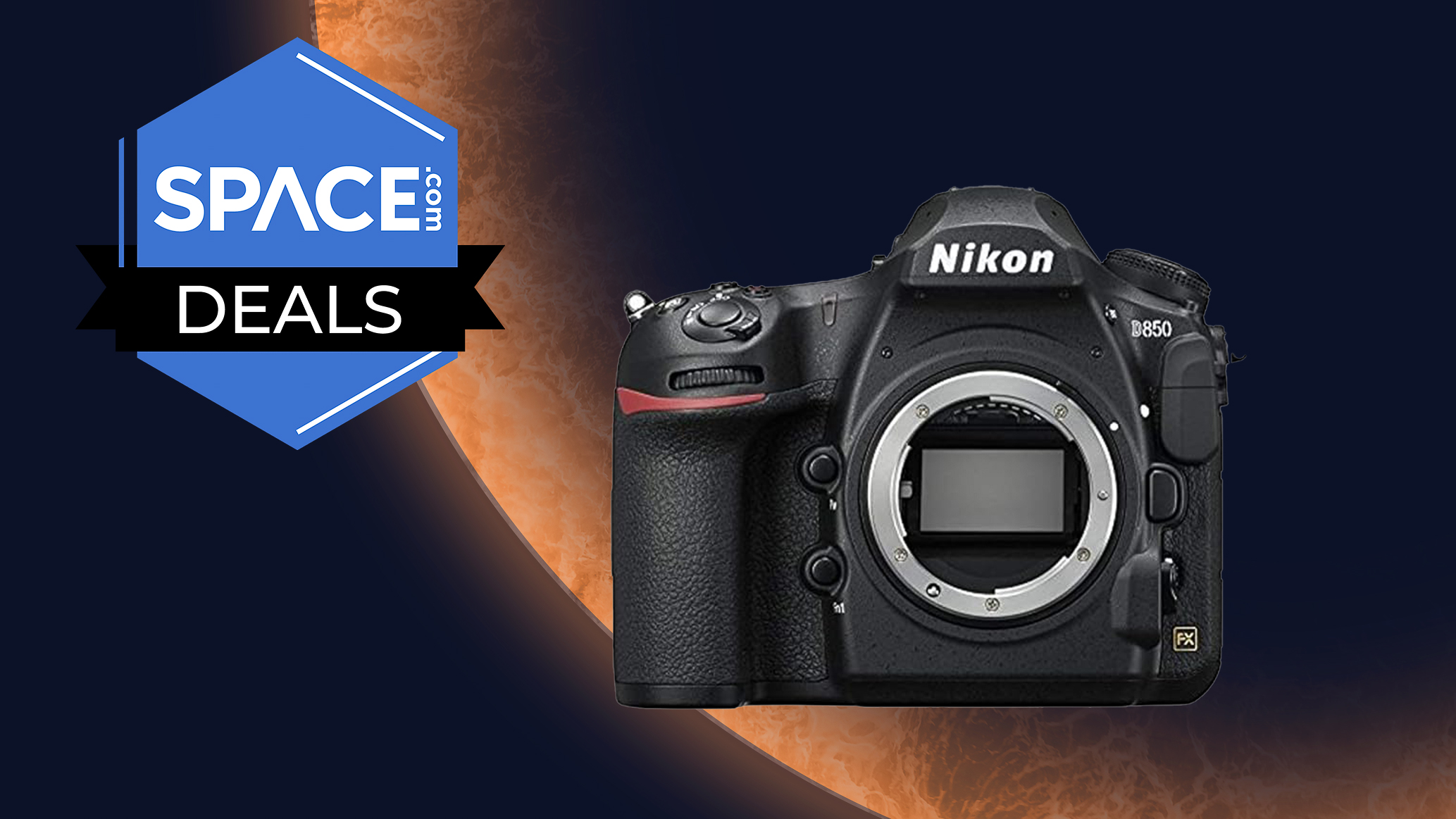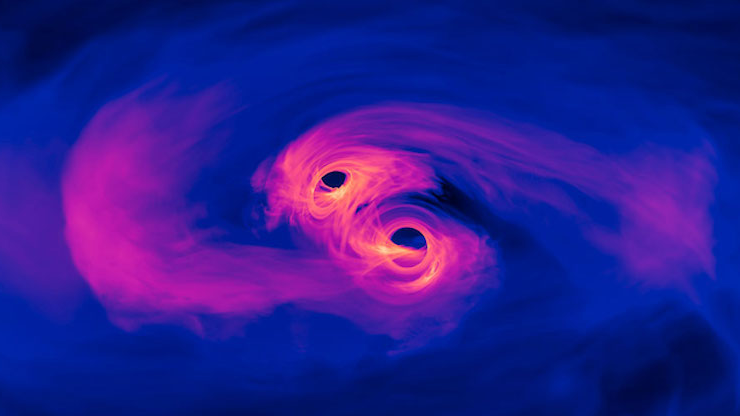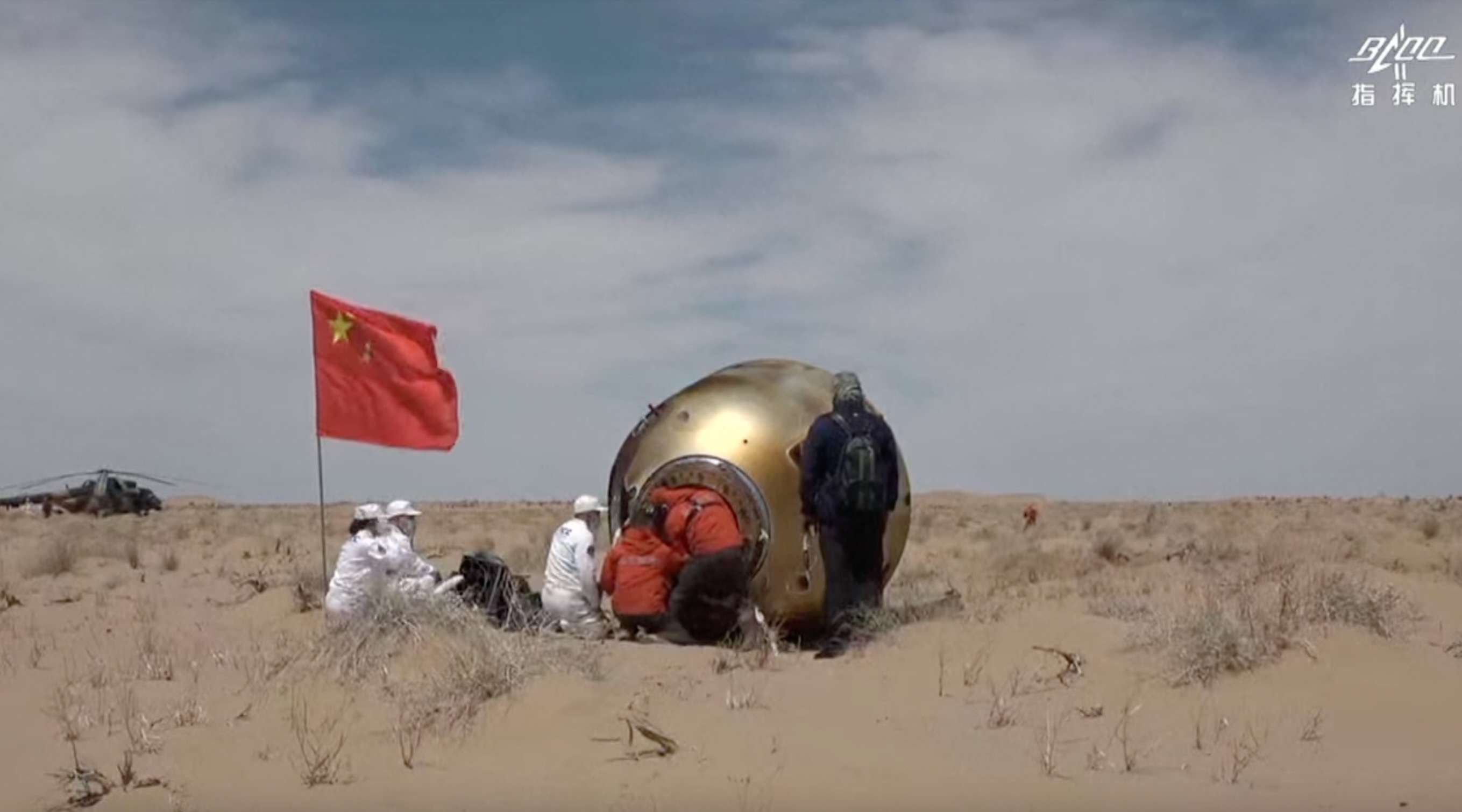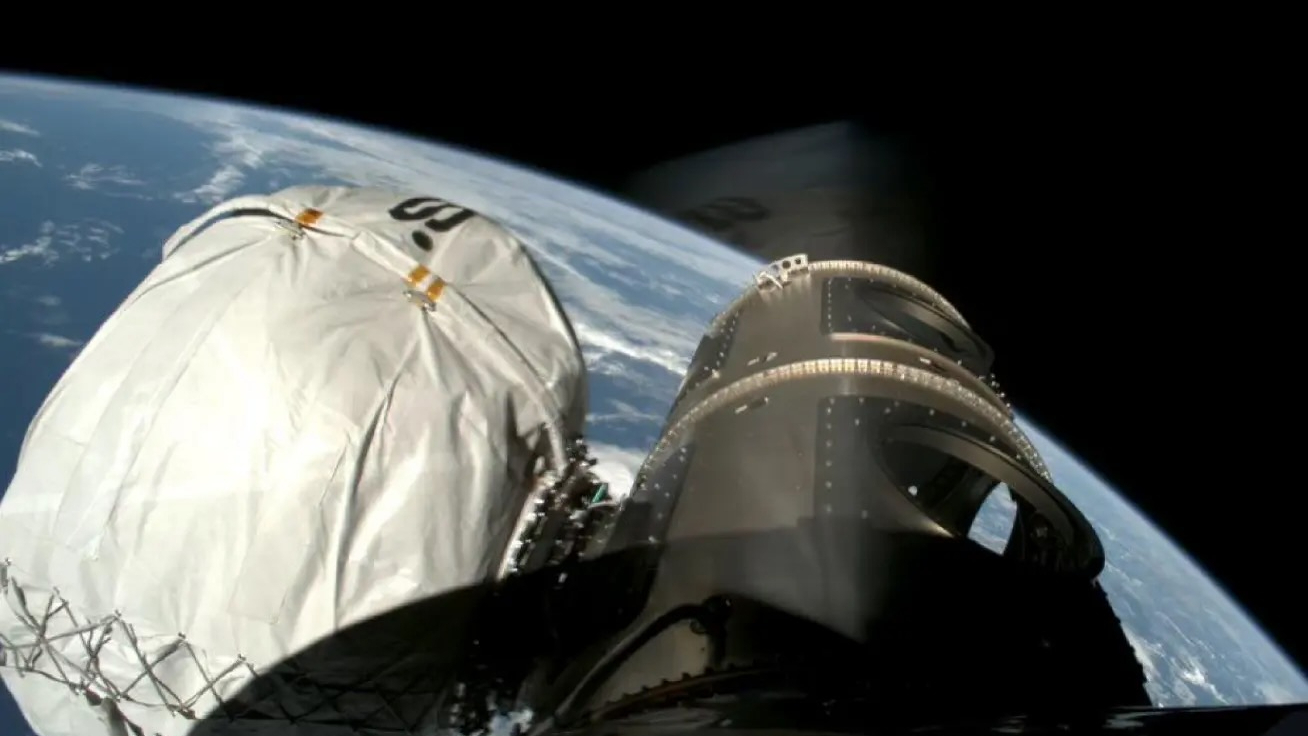Thanksgiving in Space Means Turkey, Work and Football for Astronauts
Astronauts may not be able to raise turkeys in the International Space Station (ISS), but that doesn't stop the spacefarers from having a traditional Thanksgiving dinner!
The ISS Expedition 53 crew will enjoy a specially prepared meal together this Thanksgiving (Nov. 23). Only three of the six crewmembers are from the United States, but everyone will get together to take part in this U.S. tradition. On the menu: turkey, mashed potatoes, corn bread dressing and candied yams.
Unlike many people from the U.S. back on Earth, however, the three NASA astronauts who are currently in space will not have the luxury of taking time off from work and relaxing over a four-day-long holiday weekend. [Thanksgiving Dinner in Space: How Astronauts Dine on Turkey Day]
"They don't actually have the day off on Thursday," NASA spokesman Dan Huot told Space.com in an email, adding that the crew has "a lot of cargo-unloading tasks to complete" with the Cygnus spacecraft that arrived last Tuesday (Nov. 14). However, the astronauts will at least have Friday off, Huot said.
Along with over 7,700 lbs. (3,500 kilograms) of supplies and science equipment, the Cygnus cargo craft delivered the crew their Thanksgiving dinner and some other tasty treats, like pizza and ice cream. Holiday gifts and care packages from the astronauts' families also shipped with Cygnus. With that trove of holiday goodies just waiting to be unpacked, the astronauts have plenty of incentives for working through the holiday.
"I think being up on the space station is a pretty cool place to spend Thanksgiving," NASA astronaut Joe Acaba said in a video that the crew beamed to Earth this week. "I think we have a lot to be thankful for — the opportunity to be here [and] great families that support us being up here, so I think that part of Thanksgiving is not going to change."
Another aspect of Thanksgiving that stays constant even for astronauts is the menu. However, the way that the food is prepared — and how the turkey gets from the farm to the dinner table — is a drastically different process.
Get the Space.com Newsletter
Breaking space news, the latest updates on rocket launches, skywatching events and more!
Most of the meal is prepared at the Space Food Research Facility at Texas A&M University, where researchers figure out the best ways to get food from Earth to the space station. Ready-to-eat packets of food are sealed and processed with heat to prevent any germs from traveling to space. This gives the food a longer shelf life, too. The packets of food are then shipped to the ISS on cargo-resupply missions.
Once the astronauts unload the food from the cargo spacecraft, most of it is ready to eat straight out of the packet. However, the astronauts may opt to use a briefcase-size food warmer to heat up some items, like the turkey. (There are no microwave ovens at the ISS.)
Some foods arrive dehydrated, or freeze-dried, and need to have water added before they can be eaten, like the corn bread stuffing that the astronauts will eat on Thanksgiving. Adding water and then heating up the packet of dressing is the most elaborate food preparation the astronauts will need to do for their Thanksgiving meal. [NASA's Recipe for Space Corn Bread Dressing]
After dinner, the astronauts will have cranberry-apple cobbler for dessert and maybe even watch a little football. As with many U.S. families on Earth, it is customary for astronauts to watch NFL games on Thanksgiving. "They have not communicated any specific plans to watch football [yet], but it will be available if requested per usual," Huot said.
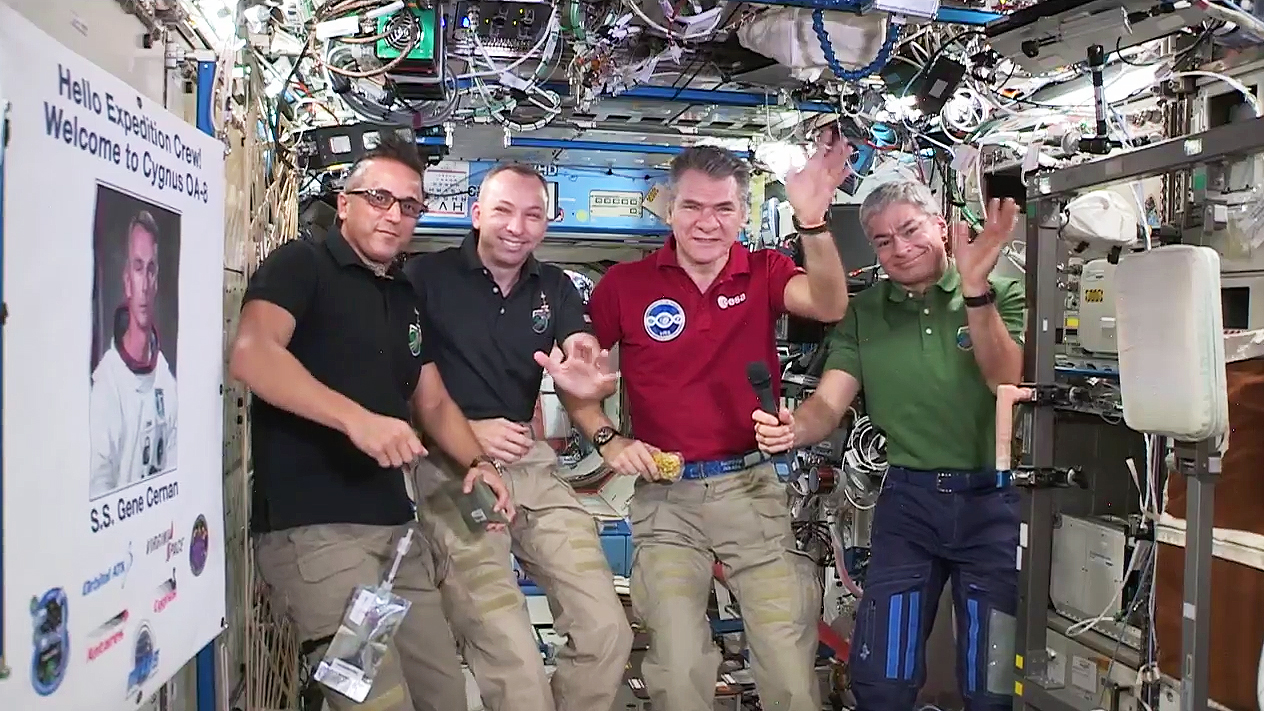
While the astronauts talked about how they'd miss spending Thanksgiving with their families in the video, they also seemed happy to be spending the holiday together in space. "I think being any place where you're surrounded by friends really makes Thanksgiving special, NASA astronaut Mark Vande Hei said in the video. "We certainly have that going on up here."
Email Hanneke Weitering at hweitering@space.com or follow her @hannekescience. Follow us @Spacedotcom, Facebook and Google+. Original article on Space.com.
Join our Space Forums to keep talking space on the latest missions, night sky and more! And if you have a news tip, correction or comment, let us know at: community@space.com.

Hanneke Weitering is a multimedia journalist in the Pacific Northwest reporting on the future of aviation at FutureFlight.aero and Aviation International News and was previously the Editor for Spaceflight and Astronomy news here at Space.com. As an editor with over 10 years of experience in science journalism she has previously written for Scholastic Classroom Magazines, MedPage Today and The Joint Institute for Computational Sciences at Oak Ridge National Laboratory. After studying physics at the University of Tennessee in her hometown of Knoxville, she earned her graduate degree in Science, Health and Environmental Reporting (SHERP) from New York University. Hanneke joined the Space.com team in 2016 as a staff writer and producer, covering topics including spaceflight and astronomy. She currently lives in Seattle, home of the Space Needle, with her cat and two snakes. In her spare time, Hanneke enjoys exploring the Rocky Mountains, basking in nature and looking for dark skies to gaze at the cosmos.
